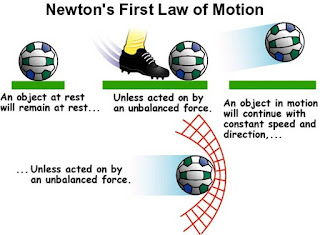CAPM Challenge I
Challenge: Find the acceleration of a ball rolling down a table using only a ball, chalk, and ruler. Also predict the velocity of the ball at 4 seconds.
With the data recorded, we calculated the velocity and acceleration of the ball. We used the data to create a graph and calculated the average velocity using the formula: V = ΔD/ΔT.
V = (123.3-0)/(4-0) or (123.3/4), which equals 30.825 cm/s
The average velocity of the ball during the trip was calculated to be .30825 meters/s2.
We had to predict the position of the ball at 4.5 seconds in order to calculate the ball's velocity at 4 seconds. We estimated the position of the ball would be 148.4 centimeters. So with this information, we calculated the velocity of the ball at 4 seconds.
(148.4 - 100.2)/(4.5 - 3.5) or (148.4 - 100.2)/(1) = 48.2 cm/s or .482 m/s2
The acceleration can be calculated using the formula: A = ΔV/ΔT.
A = (30.825 - 0)/(4 - 0) = 7.7 cm/s or .077 m/s2
Conclusion: The rate at which the ball travels down the table is dependent upon how tilted the surface (table) is; the greater the tilt of the surface (table), the faster the rate at which the ball will travel down it. The ball accelerates down the table because of an unbalanced force acting upon it. The normal force acts in a direction perpendicular to the surface. The ball's velocity increases as it travels down the table, as seen by the Position vs Time graph. Since the of the slope of the P vs T graph is positive, the acceleration will also be positive. The acceleration was calculated to be .482 m/s2.















